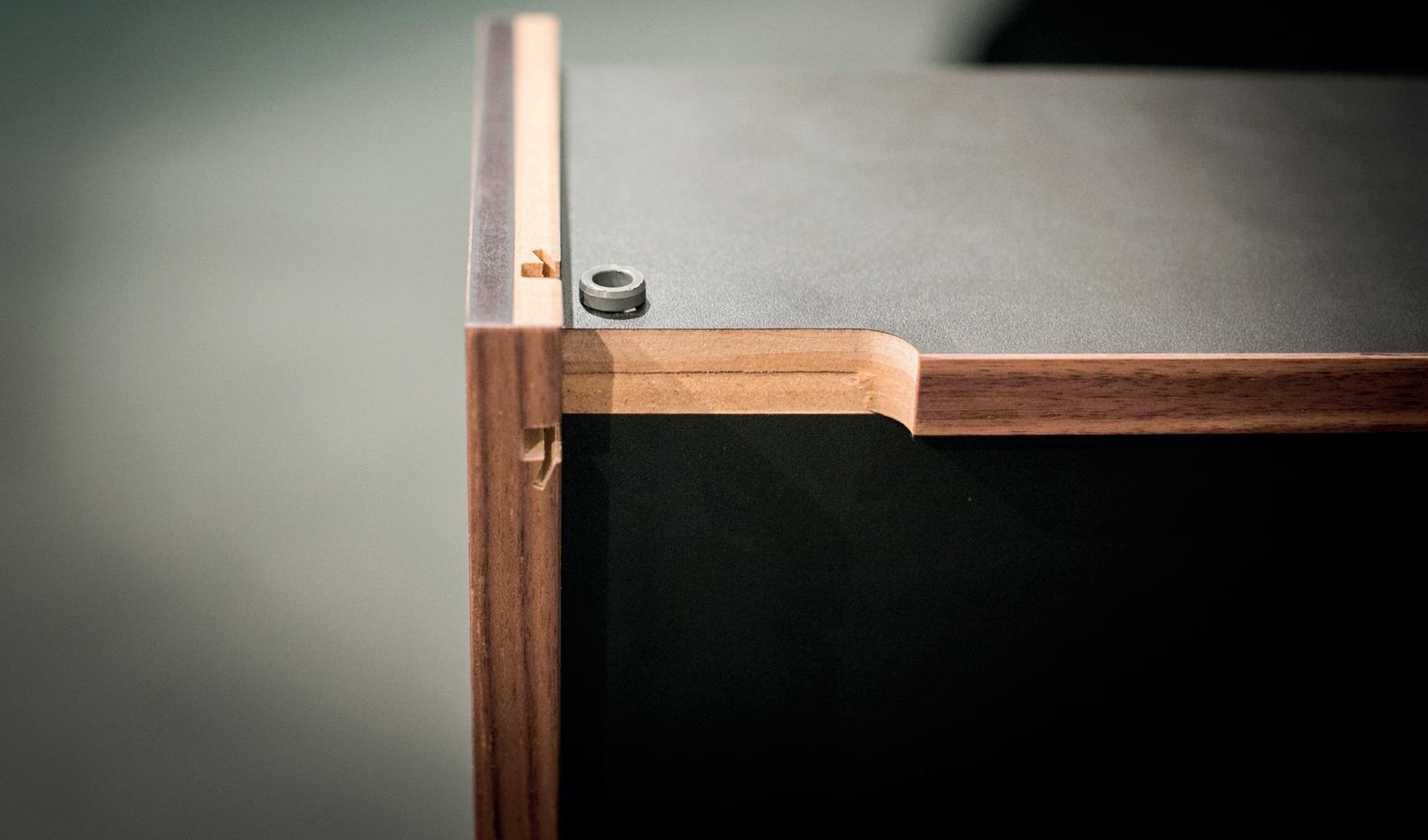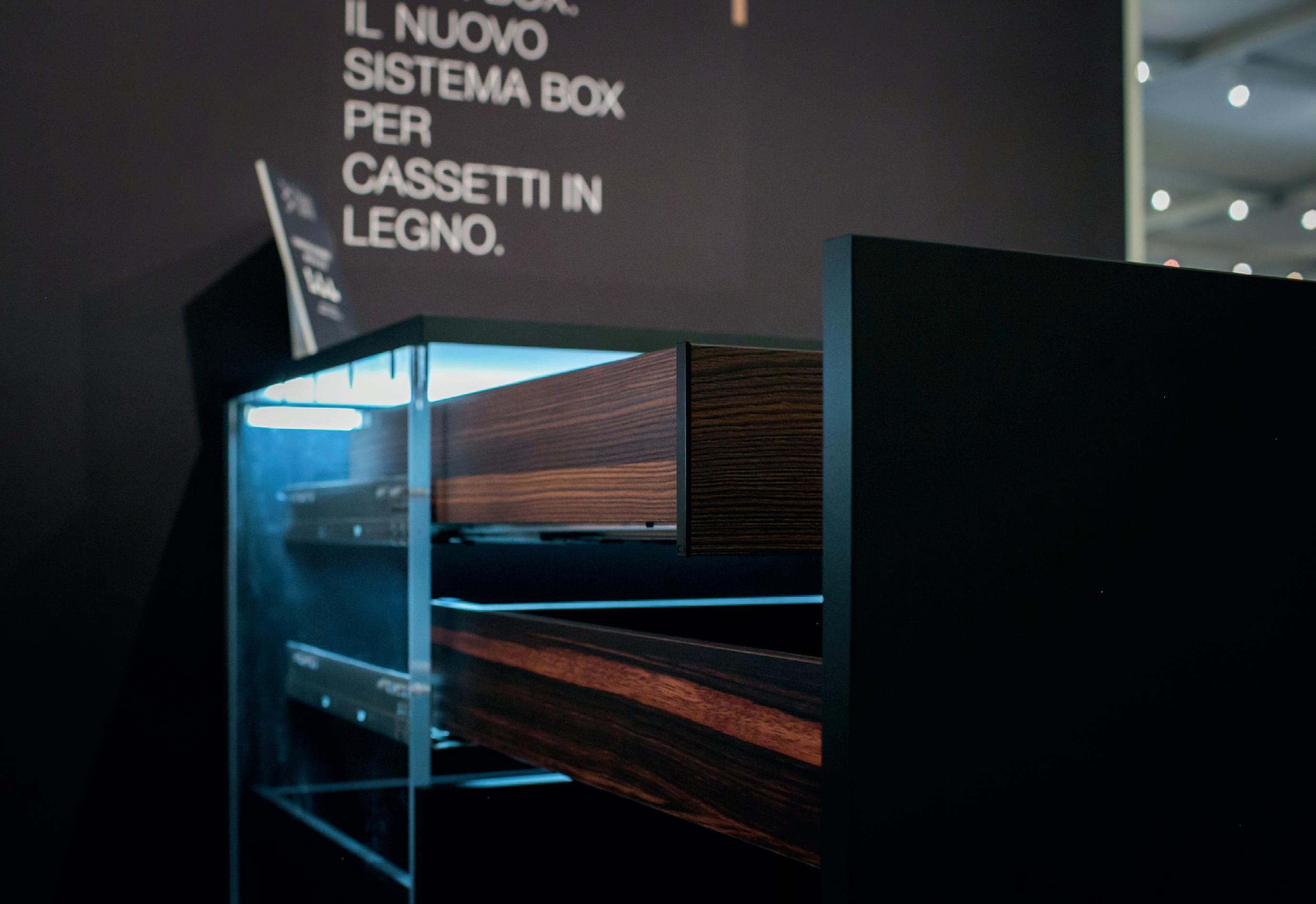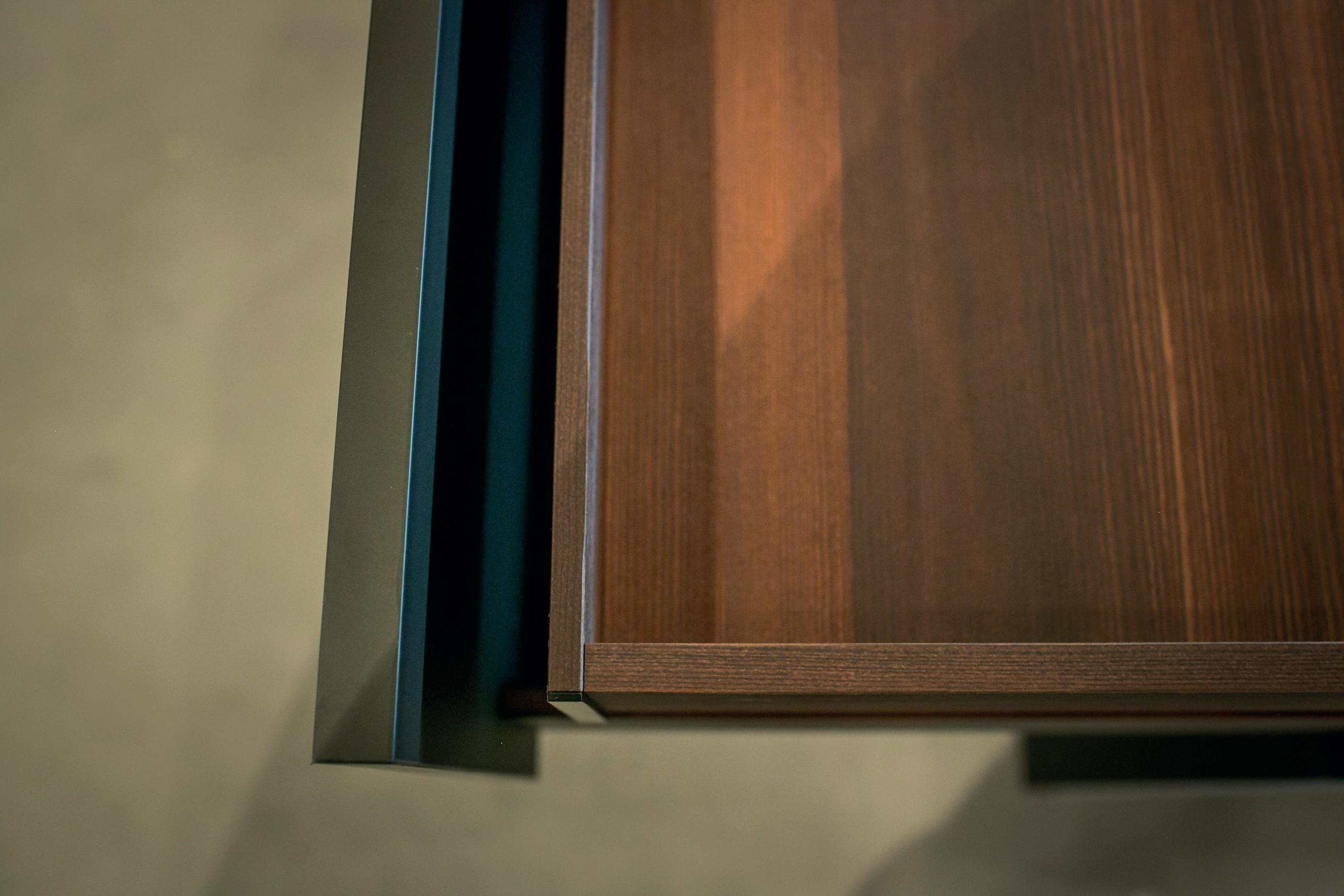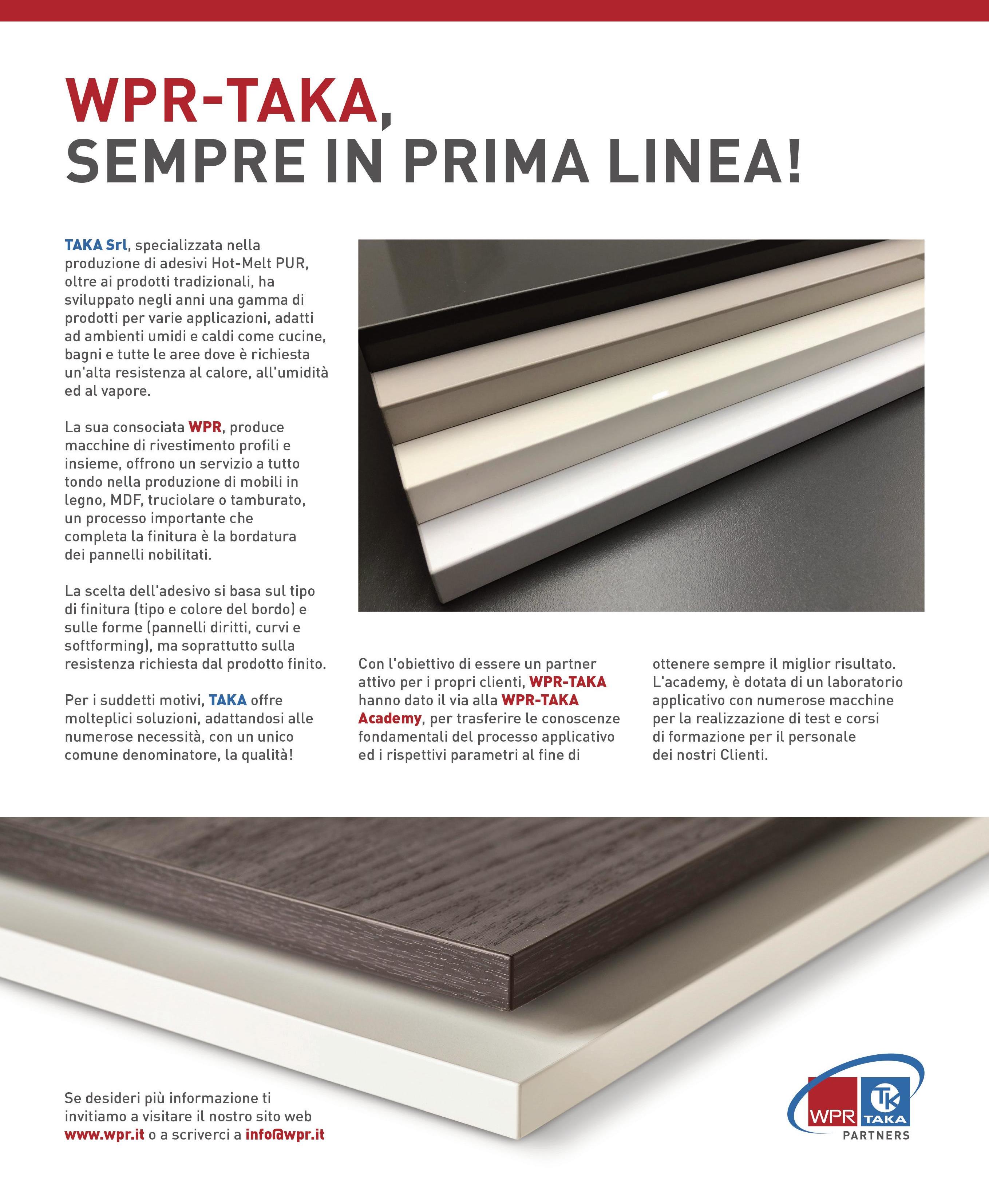
3 minute read
VAN HOECKE
pubbliredazionale VAN HOECKE taorbox.com - vanhoecke.com
TA’OR BOX: Tempo di cambiare
Advertisement

È possibile produrre un cassetto di legno che sia ben fatto come uno fatto a mano o forse anche meglio? Da questo punto ha preso le mosse lo sviluppo di TA'OR BOX. Con la nostra competenza in materia di componentistica per il mobile, abbiamo accettato la sfida di reinventare un prodotto che esisteva da decenni. Ciò significa che non si è mai troppo lontani dalla tradizione ma noi preferiamo darle un aspetto più contemporaneo, sia per quanto riguarda il design che per quanto concerne la tecnologia e la modalità di produzione. Questo perché crediamo di poter fare ancor meglio rispetto a ieri grazie alla moderna tecnologia che abbiamo oggi. In questo modo, possiamo garantire i nostri alti standard di qualità e tenere conto dei desideri e delle nuove esigenze dei nostri clienti. UN CASSETTO IN LEGNO MA CON UN RISPARMIO DI LEGNO DEL 92%!
Il design intelligente di TA'OR BOX è rifinito utilizzando i migliori tipi di impiallacciatura, sopra un'anima in HDF. Grazie ai nostri macchinari high-tech, tutti i suoi componenti sono fabbricati con precisione fino a 3/100 mm. Questo è ciò che permette al design di TA'OR BOX di entrare a pieno titolo in qualsiasi interno. I pannelli laterali, spessi 13 mm, sottolineano le sue linee minimaliste e una speciale tecnica di incollaggio fa sì che i bordi siano
Photo Credits: Maurizio Toni
quasi invisibili. Non è un caso che la qualità del TA'OR BOX abbia ottenuto la certificazione TÜV e che lo stabilimento di produzione sia già stato premiato in due occasioni come “Factory of the Future”. Quando si seleziona la finitura, il cliente può scegliere tra una gamma di decori o impiallacciature di legno di alta qualità, ognuno dei quali è prodotto secondo i principi della silvicoltura sostenibile. La nostra esclusiva tecnologia bicolore vi permette anche di dare libero sfogo alla vostra creatività combinando qualsiasi colore all'interno o all'esterno del vostro TA'OR BOX.
UN PROCESSO DI PRODUZIONE CON PRECISIONE FINO A 3/100MM
Grazie ai macchinari ultramoderni e a un processo di produzione altamente preciso, TA'OR BOX è un sistema di cassetti in legno che si distingue per le sue linee rette: bordi netti, pannelli laterali eleganti, una larghezza di soli 13 mm e tutti i componenti tagliati con precisione fino a 3/100 mm. L'ultima generazione di cassetti in legno è pronta per voi.


pubbliredazionale VAN HOECKE taorbox.com - vanhoecke.com

TA’OR BOX: TIME FOR CHANGE
‘Can we manufacture a wooden drawer that's as good as a handmade one – or perhaps even better?’ That was the starting point in the development of TA’OR BOX right from the very beginning. With our knowledge of furniture fittings in a wooden furniture component, we took on the challenge of reinventing a product that had existed for decades. That means tradition is never far away, but we prefer to give it a more contemporary look, in terms of both design and technology and the manufacturing itself. That's because we believe we can make the best of yesterday even better thanks to the modern technology of today. This way, we can guarantee our high standards of quality and take account of our customers' modern needs and wishes.
A WOODEN DRAWER WITH A 92% WOOD SAVING!
With TA’OR BOX we aim to act responsibly with the raw materials granted to us by nature. That's why we only use ecologically responsible veneer wood. The veneer layer is only 0.6mm thick. As a result, the wood saving in comparison with a solid wooden drawer is 92%. We use high-quality HDF for the core of our drawers.

A PRODUCTION PROCESS ACCURATE TO WITHIN 3/100MM
Thanks to the ultra-modern machines and a highly accurate production process, TA‘OR BOX is a wooden drawer system that stands out due to its straight lines: clear-cut edges, sleek side panels, a width of only 13mm and all components cut accurately to within 3/100mm. The latest generation of wooden drawers is ready for you.




cover tecnologie L’INDUSTRIA DEL MOBILE











